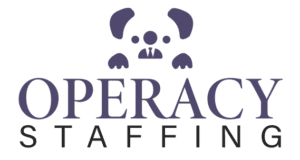
Introduction
When it comes to staffing, businesses have traditionally relied on a physical office environment. However, the rise of remote Work has it produced a new paradigm, prompting a comparative analysis of the costs associated with traditional staffing versus remote staffing strategies. Understanding the economic implications and business strategy of each model is crucial for organisations seeking to optimise their workforce and maximise cost-efficiency.This article presents a comprehensive study comparing the costs of traditional staffing and remote staffing, shedding light on the financial considerations and potential savings associated with each approach.
The shift towards remote work has been accelerated by technological advancements, changing work dynamics, and the global pandemic. Remote staffing offers businesses the flexibility to tap into talent from around the world, breaking down geographical barriers and enabling access to specialised skills that may be scarce in local markets. The ability to build diverse and globally distributed production teams has become a competitive advantage, allowing companies to adapt to market demands quickly and gain a competitive edge. However, it is crucial for managers to evaluate the financial implications of this staffing model to ensure that cost savings are achieved without compromising operational efficiency and employee productivity.
The COVID-19 pandemic served as a catalyst for remote work adoption, as organisations had to quickly adapt to ensure business continuity. Many companies discovered the benefits of remote staffing during this period, including reduced overhead costs and improved employee satisfaction. As remote work becomes more mainstream, it is essential to delve deeper into the economics behind this staffing model to provide businesses with insights and data-driven decisions. By examining the financial considerations, overhead expenses incurred, and potential cost savings of traditional staffing versus remote staffing, organisations can make informed choices that align with their future business goals and bottom line.
Overhead Expenses of Traditional Staffing
Traditional staffing models typically require a physical office space, which entails a range of overhead expenses. These include rent or mortgage payments, utility bills, office supplies, maintenance costs, and furniture expenses. Additionally, commuting allowances, parking fees, and other employee perks can contribute to the overall expenditure. These expenses can quickly add, especially companies with a large workforce or multiple office locations. For businesses operating in metropolitan areas with high real estate prices, the cost of office space can be particularly burdensome. Rent or mortgage payments alone can consume a significant portion of the budget for small businesses, limiting resources available for other business priorities.
Moreover, traditional staffing often necessitates investing in on-site equipment and infrastructure, such as servers, networking systems, and office technology. These capital expenses can place a significant burden on a company's budget, particularly for start-ups or small businesses with limited resources. Upgrading, developing and maintaining the necessary technological infrastructure can require substantial financial investments. Additionally, the rapid pace of technological advancements means that equipment may become outdated quickly, leading to the need for further investments in technology upgrades. These costs can pose challenges for businesses aiming to allocate their resources effectively and invest in other areas crucial for growth, profitability and innovation.
Financial Implications of Remote Staffing
Remote staffing, on the other hand, presents a distinct economic landscape. By embracing remote work arrangements, businesses can eliminate or substantially reduce many of the traditional overhead expenses. Without the need to pay for a physical office space, expenses such as rent, utilities, and office supplies become obsolete. This can result in substantial cost savings, particularly for companies operating in expensive metropolitan areas or regions with high real estate prices. Organisations can redirect the funds previously allocated to office-related operating expenses toward other strategic initiatives, such as technology investments, employee development programs, or marketing campaigns.
The burden of providing and maintaining office equipment is shifted to the remote workers themselves, as they typically use their own devices and workspaces. This alleviates the need for businesses to invest in costly equipment and infrastructure. Employees are responsible for ensuring they have the necessary hardware, software, and internet connectivity to perform their work effectively. This process not only reduces the financial burden on the company but also empowers employees to customise their work environment according to their preferences, which can contribute to higher job satisfaction and productivity. Additionally, remote staffing allows businesses to tap into talent from regions with lower wage expectations, potentially resulting in cost savings on salaries and benefits. With remote work, companies are not restricted to hiring from a limited local talent pool. They can access a global talent market and select from a broader range of candidates with diverse skills and experiences. This increased pool of talent allows businesses to hire professionals at competitive rates based on regional salary expectations, optimising labour costs without compromising on quality.
Cost Savings through Remote Staffing
Remote staffing offers significant cost-saving opportunities compared to traditional staffing models. By eliminating or reducing overhead expenses, businesses can allocate those resources towards other critical areas such as research and development, marketing, and service, or employee incentives. Companies can also invest in technology tools and infrastructure that facilitate remote work, ensuring seamless collaboration and communication across teams. Moreover, remote staffing enables businesses to tap into a global talent pool, providing access to highly skilled professionals who may offer their services at competitive rates. Leveraging remote work arrangements can optimise cost structures and increase profitability, while maintaining or even improving the quality of work.
In addition to the direct cost savings, remote staffing can also have indirect financial implications that contribute to overall cost-efficiency. For example, by reducing or eliminating commuting requirements, businesses can help employees save money on transportation costs, parking fees, and insurance and related expenses. This can lead to increased job satisfaction, improved work-life balance, and reduced turnover rates. Furthermore, the flexibility and autonomy offered by remote work can attract highly skilled professionals who prioritise a flexible work environment, reducing the costs associated with recruitment and talent acquisition.
Aligning Staffing Model with Business Goals
Determining the most suitable staffing model for a business depends on various factors, including its goals, industry focus, and company culture. Traditional staffing may still be the preferred choice for organisations that require on-site presence, regular face-to-face interactions with personnel, or specialised equipment not easily accessible remotely. However, for businesses seeking greater flexibility, scalability, and cost-efficiency, remote staffing can be a compelling option. It allows for a distributed workforce that operates efficiently across different time zones and geographical locations, facilitating 24/7 operations and enhancing customer support.
Remote staffing also provides businesses with the opportunity to tap into a diverse talent pool, bringing together professionals with different perspectives and expertise. This sense of diversity can foster creativity, innovation, and problem-solving within the team or organization, leading to improved business outcomes. Additionally, remote work arrangements can enhance employee satisfaction and retention, as they offer individuals the freedom to work from their preferred location and accommodate personal responsibilities. By aligning the staffing model with the goals and values of the business, organisations can create an environment that attracts and retains top talent while optimising costs and driving success.
Conclusion
In conclusion, a comprehensive comparative study of the costs associated with traditional staffing and remote staffing reveals distinct financial implications for clients and many examples of potential savings. While traditional staffing involves significant overhead expenses related to office space, equipment, and infrastructure, remote staffing offers an opportunity to eliminate or minimise many of these costs. By embracing remote work arrangements, businesses can achieve cost savings, allocate resources strategically, and access a global talent pool. Furthermore, the shift to remote staffing can bring indirect financial benefits such as increased employee satisfaction, reduced turnover rates, and improved productivity.
As businesses continue to navigate the ever-changing work landscape, understanding the economic implications of different staffing models is paramount. The choice between traditional and remote staffing depends various factors, including the nature of the work, industry dynamics, and organisational culture. While traditional staffing may still be the preferred option for certain industries, projects or roles that require on-site presence, remote staffing offers unparalleled flexibility, scalability, and cost-efficiency. It enables businesses to tap into a diverse talent pool, optimise their overhead costs and expenses, and adapt to the evolving demands of a globalised marketplace.
By creating and leveraging remote work arrangements, organisations can not only optimise their cost structures but also foster innovation, collaboration, and employee well-being. The continuous advancements in technology and the growing acceptance of remote work provide businesses with an opportunity to rethink their staffing models and align and implement them with their longterm goals. By embracing the economics of remote staffing, organisations can create a competitive advantage, drive growth, and navigate the complexities of the modern business landscape with confidence.
